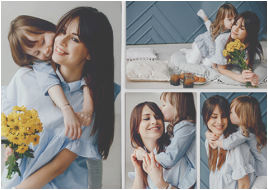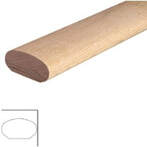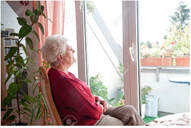|
Furniture and fittings for residents with dementia For people with dementia the world can be a confusing and frightening place.  Dementia affects brain function and can impact a person’s thoughts, behaviour and ability to perform everyday tasks. Support for people with dementia is vital and their environment must help to minimise the difficulties they experience. Living in an aged care facility with well-designed personalised spaces and suitable furniture and fittings can significantly improve the physical, psychological and social needs of residents with dementia. Personalising spaces When designing or preparing a living space for people with dementia practical and comforting elements need to be incorporated. It is essential to include equipment and fittings that assist residents with the practical day to day requirements, and it is equally important to facilitate the personalisation of private bedrooms and communal space with articles that have meaning to the residents. Strategically placed familiar furniture, ornaments, art works, treasured keepsakes, photo albums, framed photographs or other items of significance to residents can help generate reassuring emotions. In private bedrooms a display of personal items may serve to support the identity of a person with dementia by reminding them of family members and the things they have enjoyed and achieved in their lives. In common areas a similar display of reminders from residents’ lives helps personalise the shared space and increase the residents' sense of belonging. It may also serve to foster exchanges with others in the communal areas and help staff to get to know the residents more personally. Providing navigational cues People with dementia can be confused by distances and directions which makes it difficult for them to find their way around. This can be very distressing for people with dementia and create difficulties for carers. To assist their navigation the indoor environment can be designed with distinctly different rooms or zones that utilise helpful visual cues, such as wall, floor and furniture colour. This can alleviate the associated anxiety and confusion of residents when they don’t know what room they are in or how to find their way around. Navigation is also assisted when a familiar item is hung on a resident’s bedroom door or located just outside it. Thoughtful layout of fixtures, fittings and furniture can provide reminders that help people with dementia navigate the space and recognise the purpose of the space they are in. Suitable fixtures and fittings When choosing fixtures and fittings it’s important that their purpose is early recognised. They need to be safe and comfortable to use and suit people with reduced manual strength and dexterity. Grab rails in bathrooms are especially important with the risk of slippery surfaces posing a serious hazard, especially for people with dementia.  Sturdy handrails for internal and external stairs can be very helpful to assist residents to safely use the stairs. An added safeguard is to make the handrail extend beyond the first and last steps with clearly defined ends. This makes it easier to determine the length of the staircase and may lessen the risk of elderly residents misjudging the top or bottom step. Oval shaped handrails on stairs are particularly useful as they are more ergonomic than round or square handrails, With the soft curved edge of a round handrail and the broad flat surface of a square handrail, an oval shaped handrail is more comfortable for residents to support themselves with their forearms when moving up and down the stairs. Colour also helps to encourage the use of the handrails and grab rails. If they are in a colour that contrasts with the wall, they will be easier to locate. Handles and safety locks Rather than conventional fitting, curved or C shaped handles are best for doors, drawers and cupboards that need to be operated by people with dementia. These are easier to use by people with reduced strength manual dexterity. Fixed handles set at a 45-degree angle are also easier to use for elderly residents. Safe door locks are important to protect people with dementia as they often wander off and become lost. They need to be protected from accessing dangerous environments or from leaving the premises without assistance. Locks must also be fitted to cabinets to safeguard residents with dementia from gaining access to toxic chemicals, medications or dangerous equipment. There are many specialised fittings that can be installed in aged care facilities to prevent residents with dementia from gaining access to places that present a risk to them. The importance of furniture Furniture can make a huge difference to create an environment that feels more like home. The right furnishings can transfer even a cold, harsh place into a welcoming, familiar ambience. Choosing the right furniture is important for physical and psychological well-being. Moving is highly stressful to people with dementia but if their surroundings are kept as consistent as possible, the transition is less difficult. Whenever possible, personally owned furniture, such as a favourite armchair, should be installed in the resident’s room. If the resident is relocated, the old armchair goes too, and if possible, placed in a simitar position in its new location. The shape of furniture and its material can contribute to a soothing ambience. Timber furniture can be a good choice as the lustre of wood tends to make a room look cosier than some contemporary finishes. The shape of a table can be important too. A square or oblong dining table has more defined spaces for people to sit while eating and this can be less disconcerting to a person with dementia. Carefully selected furniture with distinct colours or tones can help to clearly distinguish it from the background and reduce trips and collisions. Smaller lounge room furniture, such as coffee tables or lamp tables, are safest when in a contrasting colour for visibility. It is best to minimise clutter or rugs, as these can be trip hazards. Shelving can be mounted on the walls to display books and other items out of harm’s way.  Placing a chair near a window provides a tranquil space to support times of contemplation. People with dementia may sit for extended periods of time, so choosing the right chair for comfort is important and this might well be the favourite old armchair. There are many design elements that can help to promote independence for people with dementia. When the environment is familiar, easy to access and navigate, it helps to support everyday task and promote safety, security and comfort. Following these tips may help to improve the quality of care that an aged care facility can provide its residents with dementia. Ref: Aged Care NZ Issue 02 2022 Comments are closed.
|
AuthorShonagh O'Hagan Archives
July 2024
|

 RSS Feed
RSS Feed